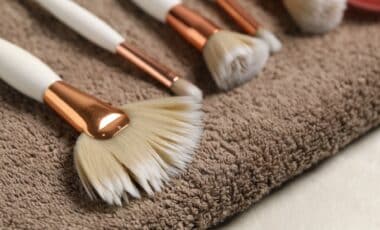As summer heats up, thigh chafing becomes a painful reality for many. This irritation happens when the skin on the inner thighs rubs together, causing redness, soreness, and discomfort. While it’s a common issue during warmer months, there are effective ways to prevent it. From choosing the right clothing to using protective products, there are simple steps you can take.
Wear the Right Clothing to Protect Your Skin
One of the most effective ways to prevent thigh chafing is by choosing the right clothing. Tight clothing can often contribute to the problem by causing excessive friction. Instead, opt for breathable, loose-fitting fabrics that allow for more air circulation and reduce friction. For instance, lightweight shorts or skirts are a great option, but pairing them with inner layers can make a big difference.
A particularly popular choice for many is wearing shorty or cycling shorts underneath dresses or skirts. These garments provide a protective layer that minimizes direct skin-to-skin contact, which is the primary cause of chafing. Moreover, this solution allows for the freedom of wearing your favorite summer outfits while protecting your skin from irritation. Many people find this particularly useful when they’re planning to stay active, whether walking around the city or enjoying an outdoor event.
The Bougiest Hangover Cure You’ve Never Heard Of
Choosing the Best Anti-Chafing Products
Products come in various forms, such as creams, sticks, powders, and sprays. Creams are perfect for sensitive skin as they provide hydration and create a smooth barrier to prevent friction. Sticks are convenient and easy to carry, offering an invisible, non-greasy layer of protection for on-the-go use. Powders are ideal for hot and humid conditions, as they absorb moisture and reduce friction. Sprays are quick and mess-free, but may require more frequent reapplication.
Dermatologists often recommend choosing products with ingredients like aloe vera or shea butter for their soothing properties. Dr. Anna Guanche, a board-certified dermatologist, emphasizes that “products with hydrating and anti-inflammatory ingredients are essential, especially for individuals with sensitive skin,” ensuring both protection and skin care
Dr. Elaine Kung also advises, “It’s crucial to opt for formulas that are non-comedogenic and free from harsh chemicals, as they reduce the risk of irritation and provide more comfort for extended wear.” Hypoallergenic and dermatologist-tested formulas are ideal for those with sensitive skin, as they minimize the risk of irritation.
Maintain Good Skin Hygiene
Preventing thigh chafing is not only about what you wear or apply to your skin but also about maintaining proper hygiene. Sweaty skin can exacerbate friction burn, so it’s essential to keep the affected area clean and dry. After a long day out in the heat, consider washing your thighs with a gentle, moisturizing soap to remove sweat, dirt, and oil. Pat the area dry with a towel, and be sure to apply a moisturizing product that helps protect your skin’s natural barrier.
If you’re prone to chafing, try to avoid wearing the same pair of clothes for extended periods. Changing into fresh clothing or switching to breathable fabrics can help reduce moisture buildup and decrease the likelihood of irritation. Keeping your skin well-maintained can go a long way in preventing from this and ensuring that you’re comfortable all day long.
Chafing Relief: Natural Solutions That Work
Natural remedies can offer soothing relief. Aloe vera gel, is a popular option known for its calming properties. Applying it directly to the irritated skin can help reduce redness and provide a cooling sensation that eases discomfort. The use of coconut oil not only hydrates the skin but also promotes healing, gently massaging a thin layer of it onto the chafed area can provide immediate relief and help speed up the recovery process.







